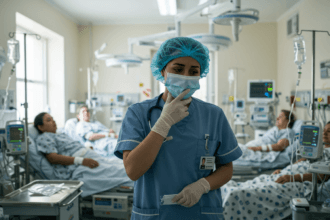Childhood obesity has become a major problem in the United States over the last few decades. Obesity poses huge risks to a child’s overall health and can create problems that often persist throughout adulthood.
Just how widespread is the problem? Physicians have diagnosed nearly 14 million children between the ages of 2 and 19 years old with obesity, according to the Centers for Disease Control and Prevention (CDC).
Obviously, it’s past time to take large-scale steps toward fixing the childhood obesity epidemic. Education about nutrition and physical activity are part of the solution, of course. But in-home physician visits may also play a key role in mitigating this serious and far-reaching public health crisis.
The Lowdown on Childhood Obesity
Childhood obesity often gets dismissed as “baby fat,” but children who are overweight or obese are likely to encounter many obstacles in their lives and ongoing health problems into adulthood. In fact, more than 2.5 million people die every year because of complications due to obesity, according to the World Health Organization (WHO).
Obesity and poor nutrition can have a major impact on a child’s growth and can lead to musculoskeletal disorders, diabetes, cardiovascular disease, and cancer later in life. Even though children who are overweight may be taking in too many calories, their diets often lack vitamins, minerals, and other key nutrients.
The obesity epidemic is also affecting many kids’ psychological well-being, as children who are overweight are more likely to be targeted for bullying and rejection. Depression, low self-esteem, and other serious issues can occur when children feel isolated and teased.
It’s Time for an Obesity Intervention
We know that childhood obesity is a growing problem and that it puts kids at risk for lifelong physical and mental health challenges. The number of kids and teens who are obese has tripled since the 1970s, and it’s clearly past time for an obesity crisis intervention.
So why haven’t we been able to reverse this dangerous trend in the last few decades? Part of the problem is a lack of access. Some children simply don’t have access to healthy food or safe places to exercise. But there are lots of other additional factors in play, which may include more time spent looking at screens rather than playing outdoors, the availability of high-calorie, low-nutrition food, sleep deprivation, contact with hormone-disrupting chemicals, and stress.
Healthcare costs for children and adults who are obese have skyrocketed. It may be time to put at least some of those dollars toward reducing the childhood obesity epidemic with in-home visits.
In-Home Visits May Be Just What the Doctor Ordered
Researchers are interested in finding out if personalized in-home healthcare could help families live healthier lives and reduce childhood obesity. The theory is that if a healthcare provider can come into the family home and get to know their routines and habits, they can make recommendations for sustainable, healthy choices that really make a difference in these children’s lives.
During a home visit, doctors and counselors can see exactly what kind of food the family buys, where the children can play safely in the neighborhood, and how they spend their time. Using that information, they might recommend new dietary choices, talk about reducing screen time, and provide ideas for encouraging active play.
Destroying the Digital Demon
A lack of physical activity is one of the primary causes of obesity. Children just aren’t as active as they once were – thanks, in large part, to all the digital distractions we use on a daily basis.
Today, many consumers of all ages spent a great deal of free time glued to one screen or another, ultimately choosing a sedentary, digital lifestyle over fitness activities that encourage good health. Unfortunately, these habits start early. Studies show that 70% of teens check their cell phones as soon as they wake up.
Parents need to be aware of this trend to ensure that their children grow up active and healthy. Limiting screen time and spending time playing outdoors, hiking, doing yoga, etc. are great ways to keep kids active and build family bonds. Sports and other organized activities can also help kids strengthen social bonds while getting more exercise.
When encouraging kids to put down their devices and head outside, it’s crucial for parents to be good role models. You can’t sit on the couch with your phone all afternoon and expect your kids to go out and play. It’s as simple as that!
A Healthier Future
Not only does obesity have an adverse impact on individual families, but it also increases national healthcare spending and makes people live shorter, less productive lives. Healthcare providers need to see what families go through on a daily basis to help them lead healthier lives.
Home visits during the first few years and beyond can make a big difference for some families in preventing and reducing obesity. Personalized healthcare can help families take concrete steps toward a healthier future and could eventually help to end the childhood obesity epidemic.









